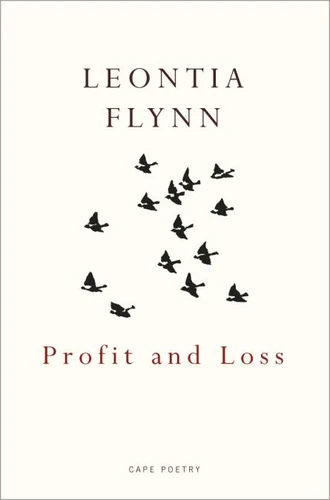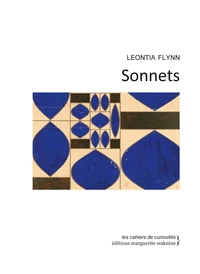Profit and Loss
Par :Formats :
Disponible dans votre compte client Decitre ou Furet du Nord dès validation de votre commande. Le format ePub protégé est :
- Compatible avec une lecture sur My Vivlio (smartphone, tablette, ordinateur)
- Compatible avec une lecture sur liseuses Vivlio
- Pour les liseuses autres que Vivlio, vous devez utiliser le logiciel Adobe Digital Edition. Non compatible avec la lecture sur les liseuses Kindle, Remarkable et Sony
- Non compatible avec un achat hors France métropolitaine
 , qui est-ce ?
, qui est-ce ?Notre partenaire de plateforme de lecture numérique où vous retrouverez l'ensemble de vos ebooks gratuitement
Pour en savoir plus sur nos ebooks, consultez notre aide en ligne ici
- Nombre de pages80
- FormatePub
- ISBN978-1-4481-1281-4
- EAN9781448112814
- Date de parution01/09/2011
- Protection num.Adobe DRM
- Infos supplémentairesepub
- ÉditeurVintage Digital
Résumé
Celebrated as an unusually original poet - nervy, refreshing, deceptively simple - Leontia Flynn has quickly developed into a writer of assured technical complexity and a startling acuity of perception. In her third collection, Flynn examines and dismantles a fugitive life. The first sequence moves through a series of rooms, reflecting on aspects of the author's personal and family history. Using the idea of the haunted house or the house with a sealed-off room, and Gothic tropes of madness, doubles, revenants and religious brooding, the poems consider ideas of inheritance and legacy.
The second section comprises a magnificent long poem written in the months leading up to the banking crisis and presidential election of October 2008. Taking as its occasion a flat-clearing, it assumes a more public voice (inspired partly by Auden's 'Letter to Lord Byron'), and reflects on aspects of the rapid social and technological change of the last decade. An extraordinarily moving reflection on mutability and mortality prompted by the spring-cleaning of a life's detritus, 'Letter to Friends' evolves from a private reliquary to a public obsequy.
Its collapse back into private griefs, including the poet's father's decline into Alzheimer's disease, is pursued in the third section of the book. Here the theme of a tallying of private and public balance sheets, of different kinds of profit and loss, widens to include poems of motherhood and marriage, the possibilities of hope and repair.
The second section comprises a magnificent long poem written in the months leading up to the banking crisis and presidential election of October 2008. Taking as its occasion a flat-clearing, it assumes a more public voice (inspired partly by Auden's 'Letter to Lord Byron'), and reflects on aspects of the rapid social and technological change of the last decade. An extraordinarily moving reflection on mutability and mortality prompted by the spring-cleaning of a life's detritus, 'Letter to Friends' evolves from a private reliquary to a public obsequy.
Its collapse back into private griefs, including the poet's father's decline into Alzheimer's disease, is pursued in the third section of the book. Here the theme of a tallying of private and public balance sheets, of different kinds of profit and loss, widens to include poems of motherhood and marriage, the possibilities of hope and repair.
Celebrated as an unusually original poet - nervy, refreshing, deceptively simple - Leontia Flynn has quickly developed into a writer of assured technical complexity and a startling acuity of perception. In her third collection, Flynn examines and dismantles a fugitive life. The first sequence moves through a series of rooms, reflecting on aspects of the author's personal and family history. Using the idea of the haunted house or the house with a sealed-off room, and Gothic tropes of madness, doubles, revenants and religious brooding, the poems consider ideas of inheritance and legacy.
The second section comprises a magnificent long poem written in the months leading up to the banking crisis and presidential election of October 2008. Taking as its occasion a flat-clearing, it assumes a more public voice (inspired partly by Auden's 'Letter to Lord Byron'), and reflects on aspects of the rapid social and technological change of the last decade. An extraordinarily moving reflection on mutability and mortality prompted by the spring-cleaning of a life's detritus, 'Letter to Friends' evolves from a private reliquary to a public obsequy.
Its collapse back into private griefs, including the poet's father's decline into Alzheimer's disease, is pursued in the third section of the book. Here the theme of a tallying of private and public balance sheets, of different kinds of profit and loss, widens to include poems of motherhood and marriage, the possibilities of hope and repair.
The second section comprises a magnificent long poem written in the months leading up to the banking crisis and presidential election of October 2008. Taking as its occasion a flat-clearing, it assumes a more public voice (inspired partly by Auden's 'Letter to Lord Byron'), and reflects on aspects of the rapid social and technological change of the last decade. An extraordinarily moving reflection on mutability and mortality prompted by the spring-cleaning of a life's detritus, 'Letter to Friends' evolves from a private reliquary to a public obsequy.
Its collapse back into private griefs, including the poet's father's decline into Alzheimer's disease, is pursued in the third section of the book. Here the theme of a tallying of private and public balance sheets, of different kinds of profit and loss, widens to include poems of motherhood and marriage, the possibilities of hope and repair.










